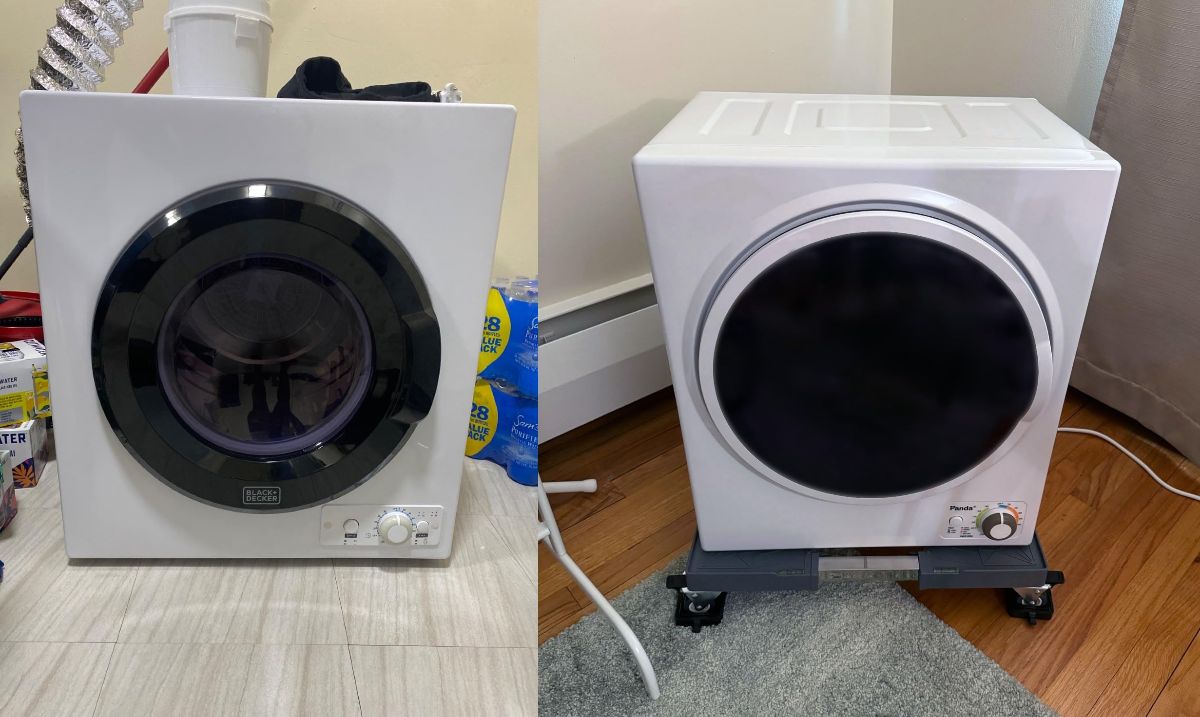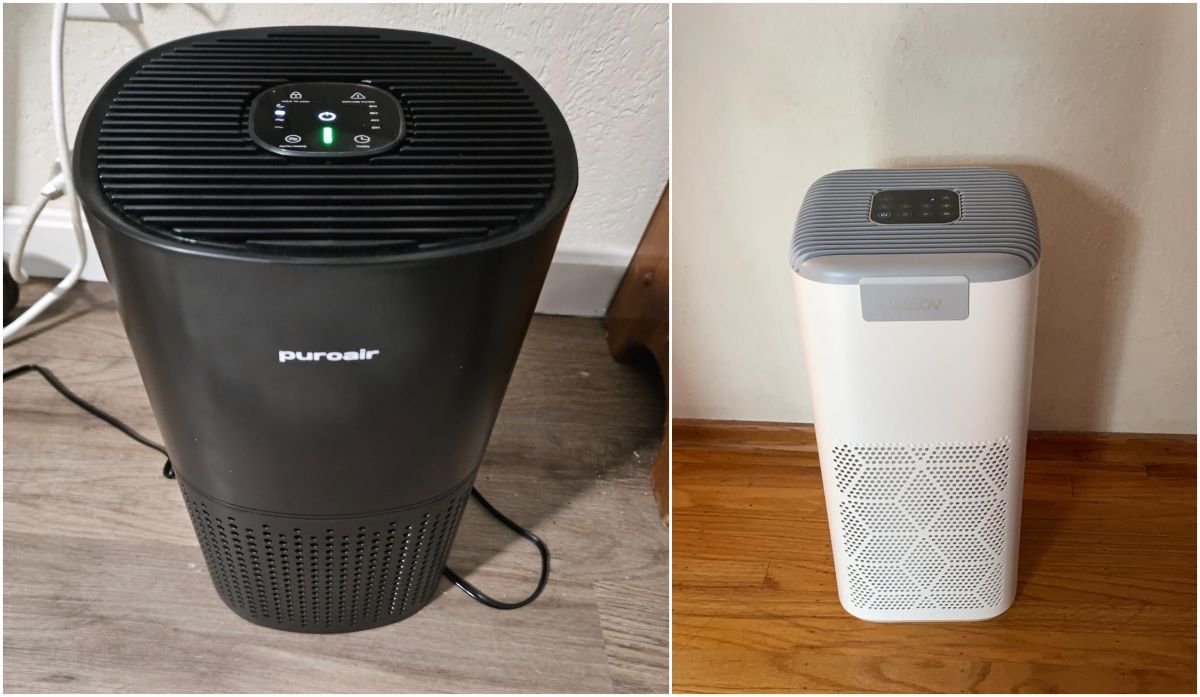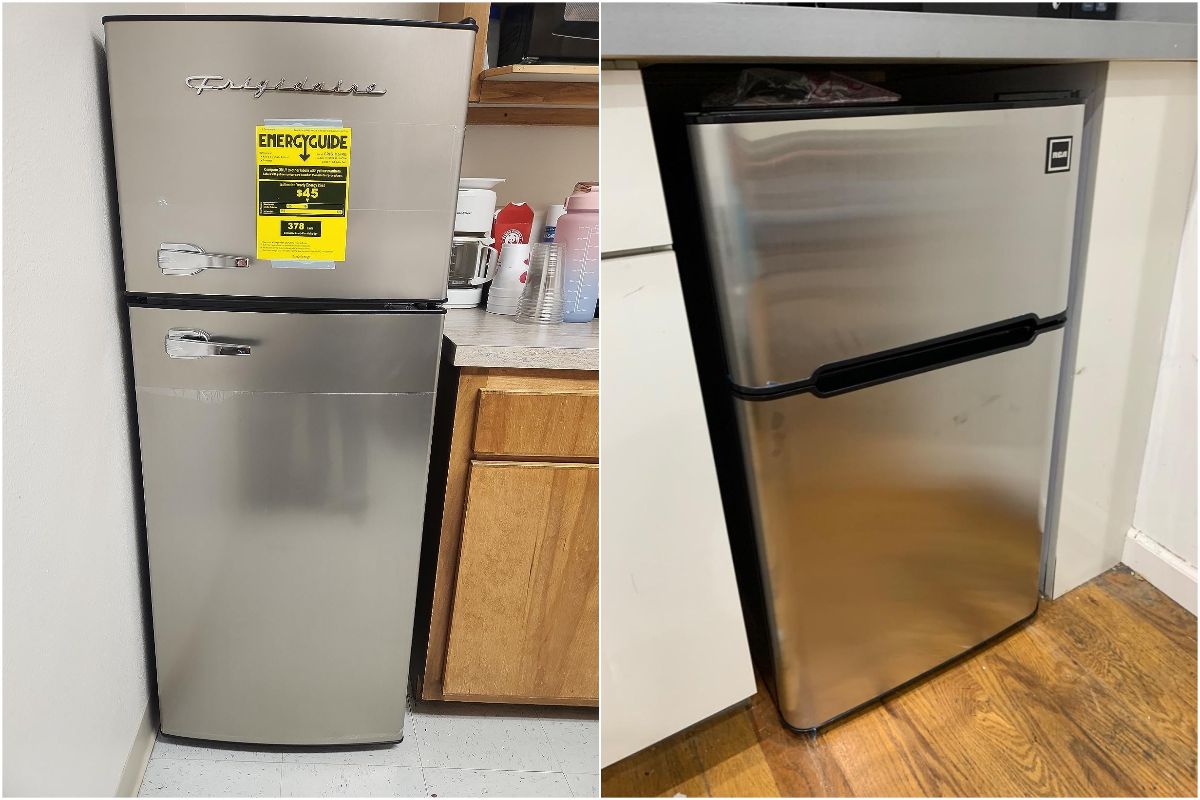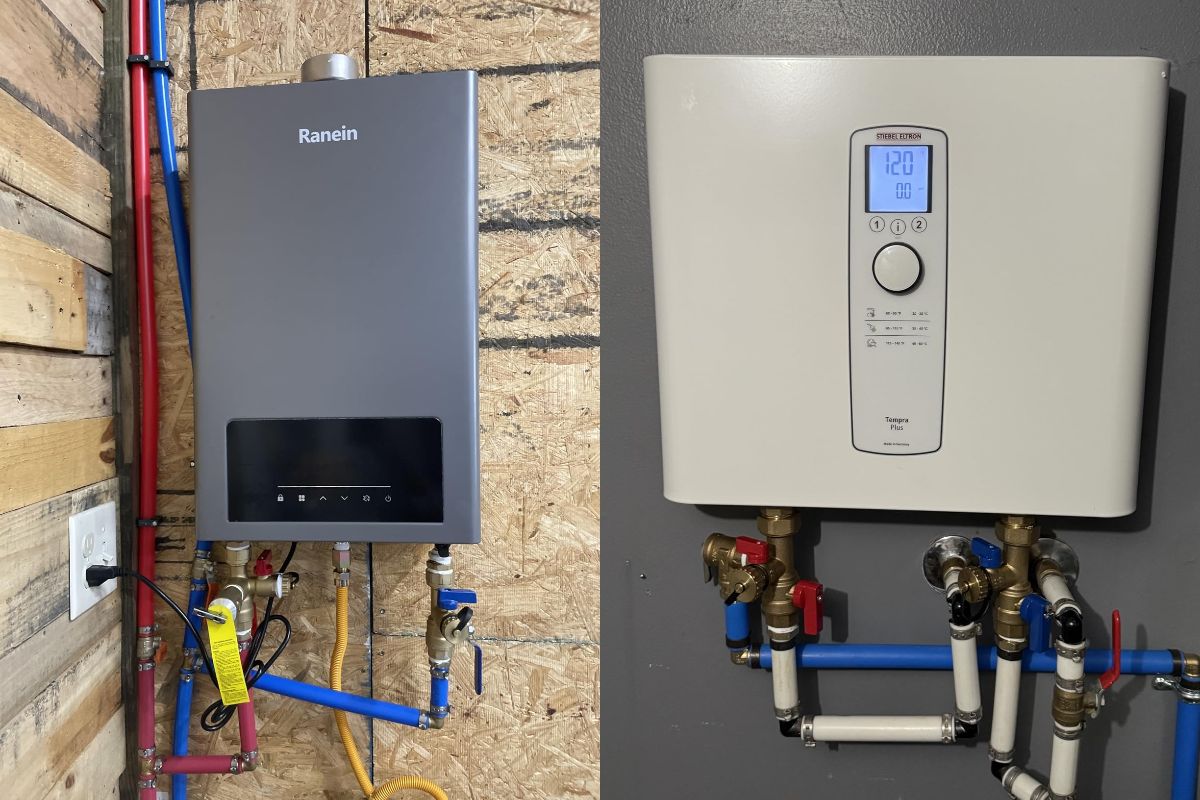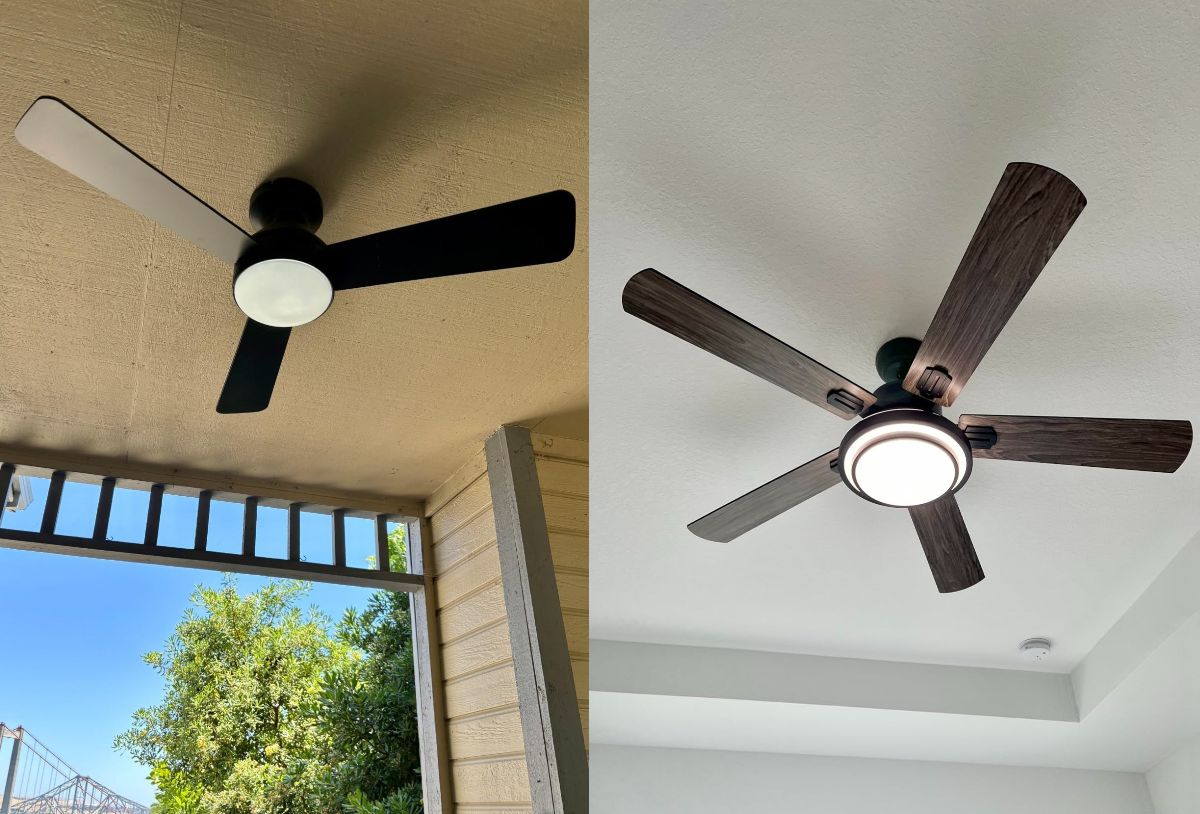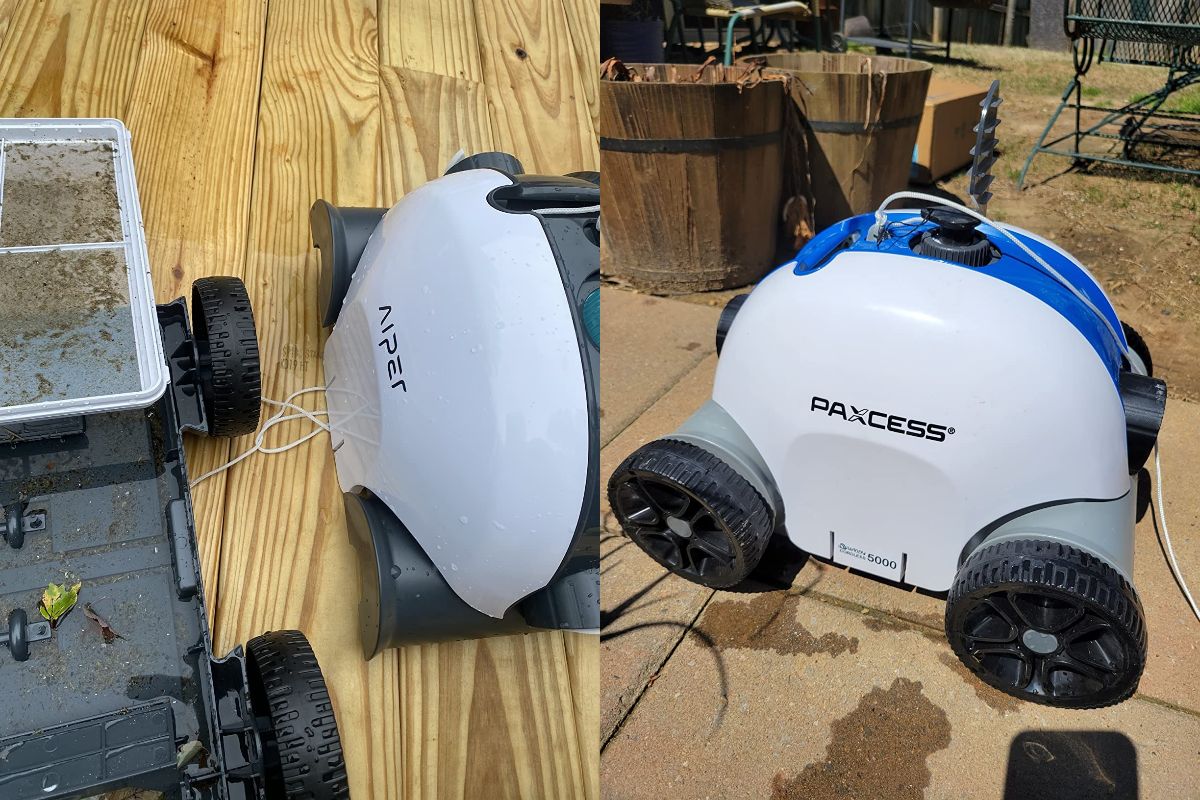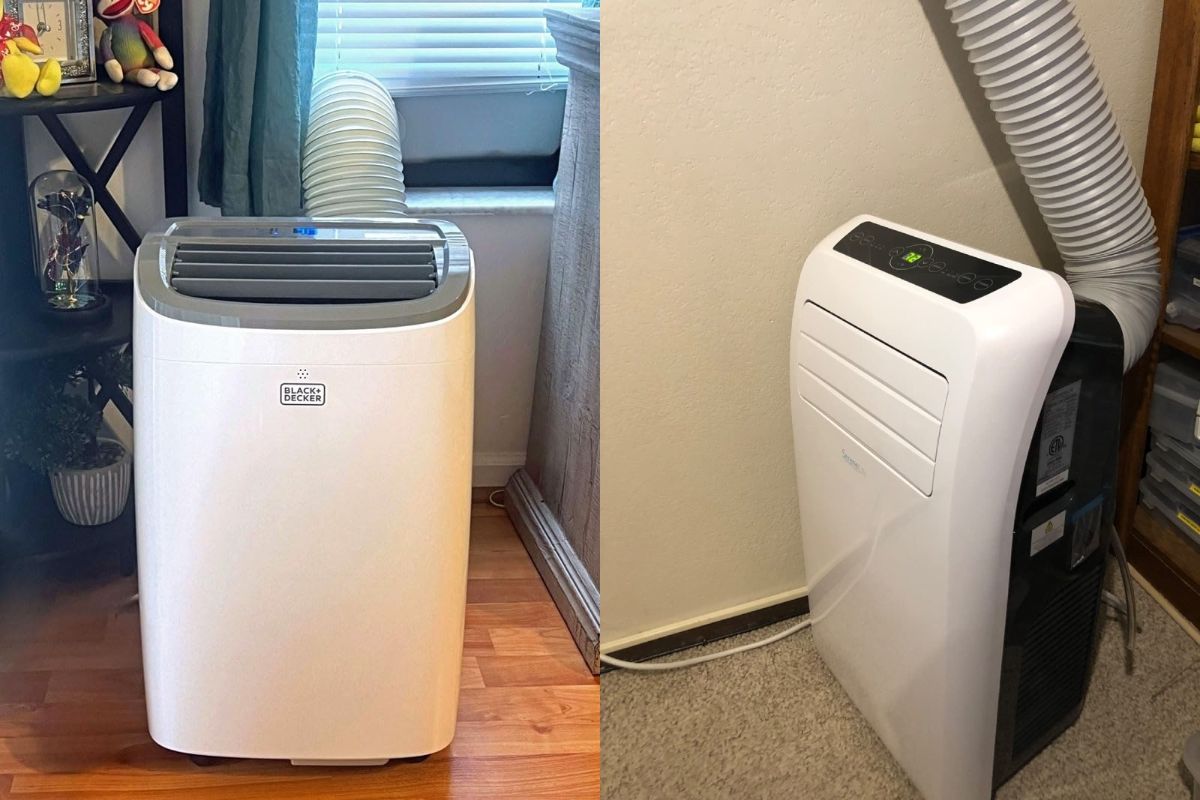Looking for the best clothes dryer for your home? We went beyond product specs and brand claims to see what real customers had to say. This roundup is based on genuine user reviews, highlighting dryers that deliver on performance, reliability, and everyday convenience. Whether you need a compact option for small spaces or a powerful machine for large loads, these top-rated picks have been tested and trusted by people just like you.
1. COSTWAY GYJ25-78 Laundry Dryer
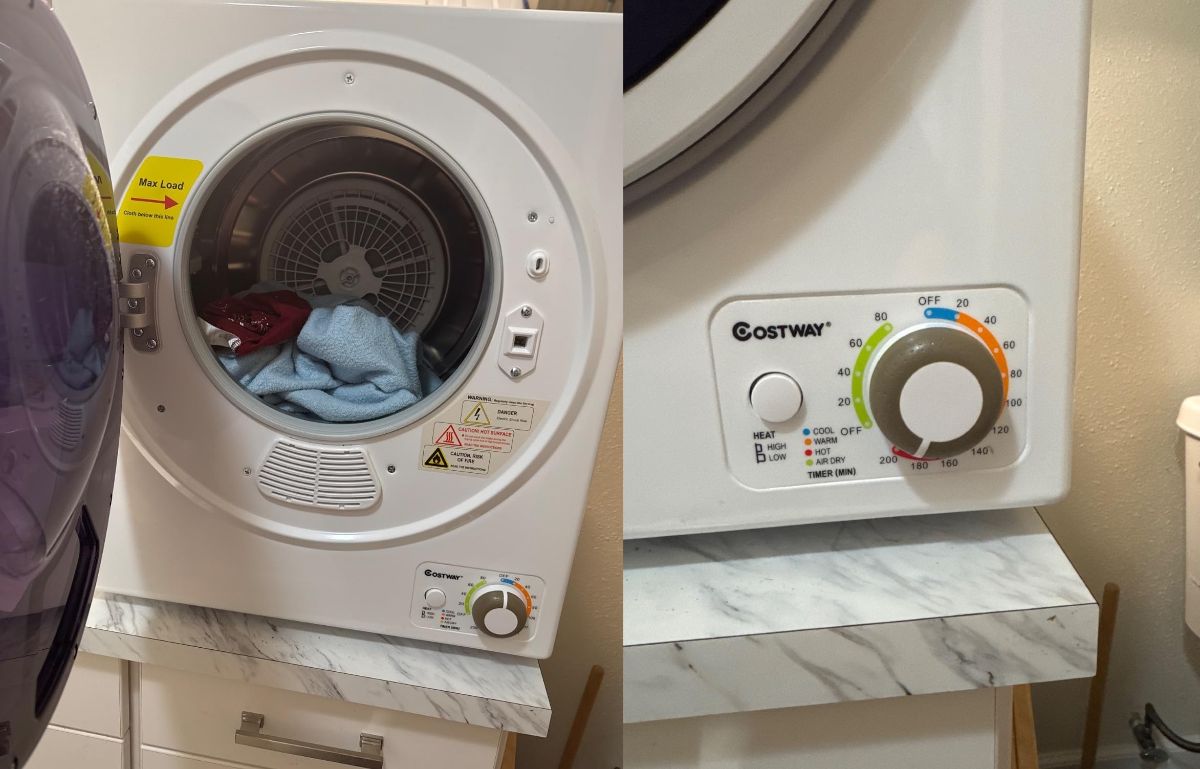
Helpful Review: This compact dryer is surprisingly effective for its size. I can fit a full bath towel or a standard set of clothes like a shirt, pants, socks, and underwear comfortably. It’s especially great for small loads, making it ideal for single-person use or tight spaces such as apartments, RVs, or bathrooms. I placed mine in the bathroom, and it’s so quiet that I only noticed it running because the room got warm.
It’s not the fastest, as jeans, sweatshirts, or heavier items can take around two hours, but it handles lighter loads like socks, tees, or towels much quicker. Using a spin dryer beforehand helps reduce drying time. I pair it with an 8-pound washer and a separate spin dryer, which makes the whole process more efficient.
Installation is very simple. Just take it out of the box and plug it in. No complex setup or venting is needed, though it comes with a pipe if you want to attach a hose. The “no heat” setting is also a helpful feature. It runs quietly and feels sturdy, but keep in mind the real working capacity is closer to 5 pounds, even though the pictures might suggest more.
One unit arrived with a dent, but it still worked well. If you expect to dry large loads quickly, this may not be the best choice. However, for minimal laundry needs or as a temporary or backup option during renovations, it performs well. Overall, I’m very satisfied with this purchase.
2. Euhomy Compact Laundry Dryer
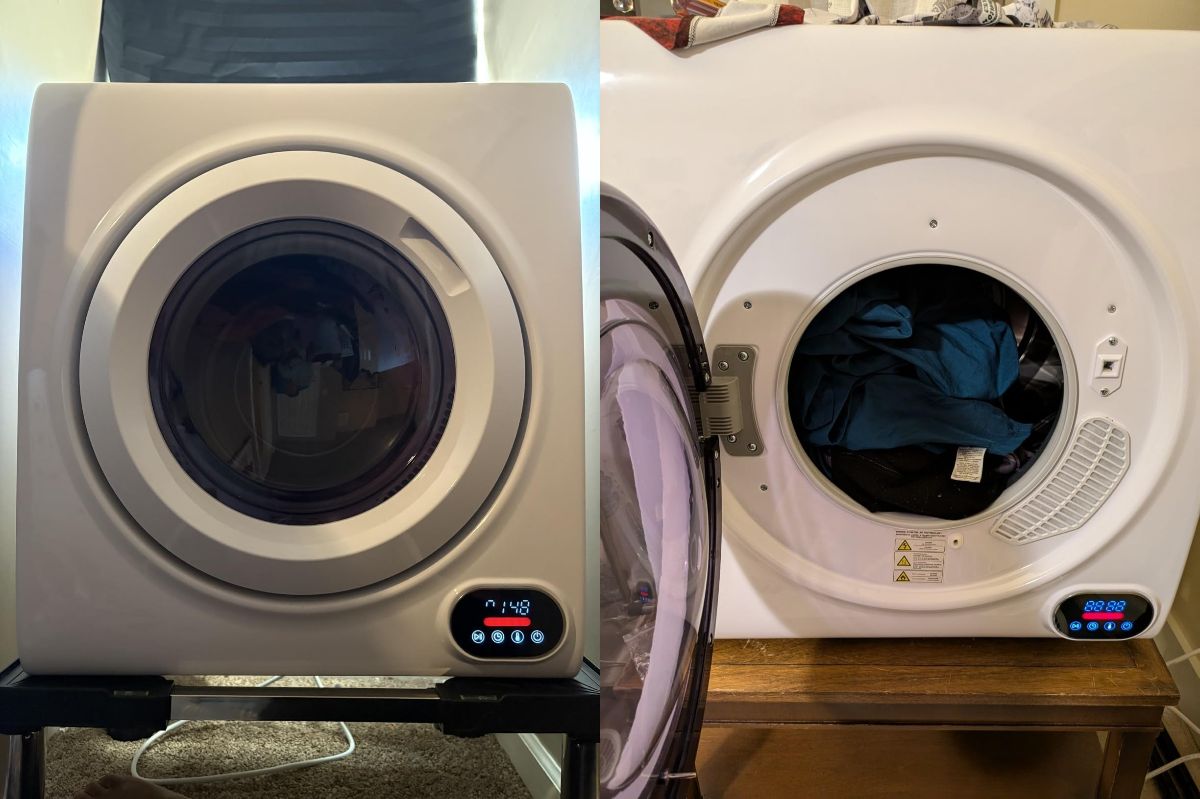
Helpful Review: I purchased this dryer in March 2023, and after using it for two years, I felt it was time to share my experience with this handy little machine. Starting with the few downsides, the dryer does take a while to fully dry clothes. If you let laundry pile up, you may find yourself spending an entire day getting through it. However, for regular use, I typically wash whatever clothes my family and I have worn every two days, and it handles that amount in one cycle. After about three months, I started hearing a noise coming from the dryer, which I later discovered was caused by some sponge-like padding at the back wearing down due to friction from the belt. This seems to be a common issue based on other reviews I read. Thankfully, it didn’t affect the dryer’s performance and the noise didn’t bother me, but it’s worth noting.
On the positive side, the dryer has worked really well for me and my family. It may be small, but it handles a surprising amount of laundry and typically dries a load in about an hour to an hour and a half, depending on how well your washer spins out the water. It has saved me so much time and money by avoiding trips to the laundromat. I was especially impressed by the drying capacity. I’ve dried a king-size sheet in just 20 to 30 minutes and managed up to three towels and five washcloths at once. Towels do take longer, usually around two hours on the hottest setting, so I usually leave those overnight. For clothes, as mentioned earlier, it dries two days’ worth of laundry for me and my two kids in about an hour and a half. Just be careful not to overfill it, as that can slow things down.
What really motivated me to write this review was the level of support I received when the drum belt finally gave out after nearly two years of daily use. I didn’t buy extended protection and was outside the warranty period, but the customer service I received was outstanding. I followed the instructions on the Euhomy website and emailed a photo to their support team. Despite being based in China, they responded quickly and guided me through the process. I paid for the replacement parts and received them within two days. After replacing the belt, the dryer has been working like new.
This dryer is small but powerful. I would rate the dryer itself 4 out of 5 stars because of the noise that started early on, but the excellent customer service adds that final star. If you’re in a situation where you can’t have a full-size dryer and you’re considering this one, I highly recommend going for it. Like any appliance, it may need some maintenance over time, but it has been an incredibly convenient and reliable part of our home.
3. BLACK+DECKER 1.5 Cu. Ft. Compact Dryer
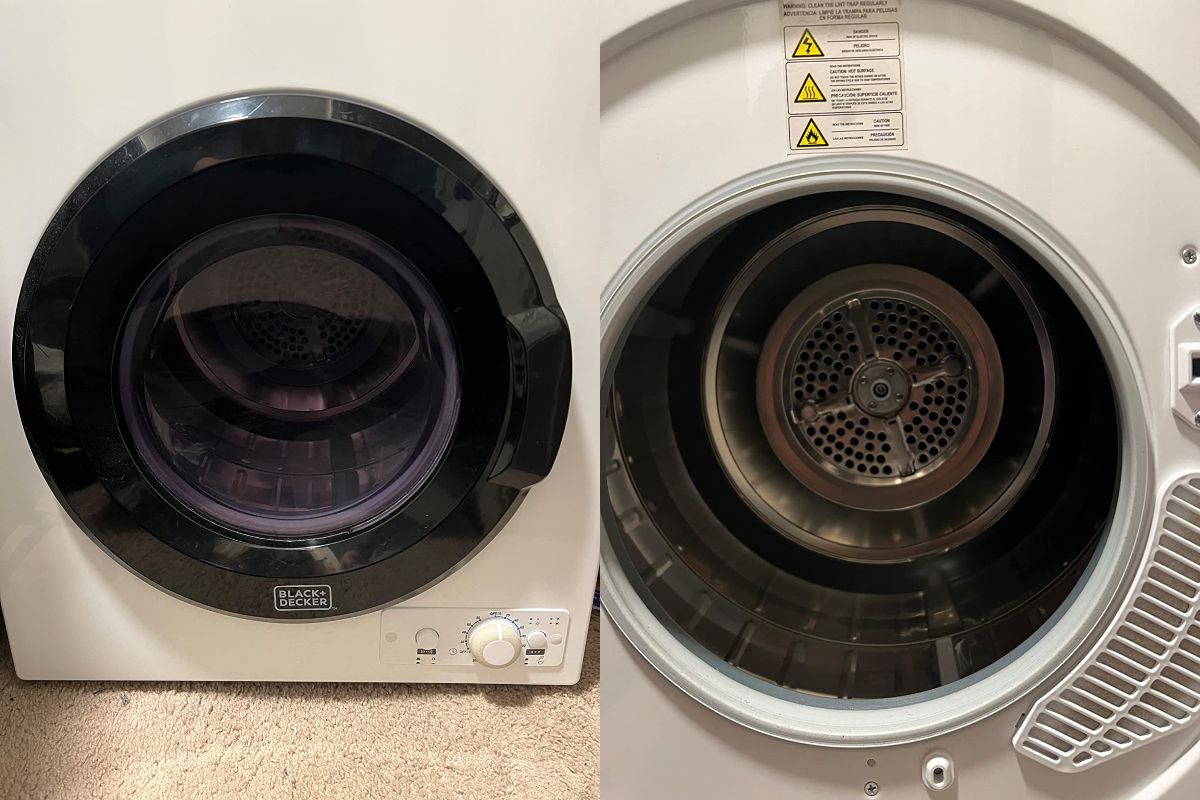
Helpful Review: I’ve used this dryer several times and have been very pleased with its performance. When using a full-size washer, I usually run this dryer three times for about an hour each time, with the drum about half to two-thirds full. This gets the clothes dry enough for my needs, and then I transfer them to folding bamboo drying racks to finish drying. This includes heavier items like pants, towels, and t-shirts. If I run the dryer longer, it can get the clothes completely dry. For a single damp bath towel after a shower, it takes about 15 minutes to dry.
I live in a relatively dry climate with indoor humidity typically between 40 to 50 percent, so clothes air dry quickly. For smaller items, I partially dry them in the dryer for 30 to 60 minutes, then leave them in a laundry basket and tumble them manually a few times a day. This process gives them a nice fluff while saving energy. I’m happy with the size of the 2.65 cubic foot drum. It’s not suited for comforters or large blankets, but it handles normal-size sheets and everyday clothing just fine. It usually takes about three dryer loads to dry one large full washer load.
For venting, I used a simple DIY method. I took a 28-ounce steel can, removed both ends, and used it as a connector with a 4-inch diameter dryer vent hose. I secured one end to the dryer’s output and the other to the can using clamps, being careful not to overtighten since the dryer outlet is plastic. Then, I created a cardboard insert for my sideways-opening window. The cardboard is about five inches wide and three feet tall, with a hole at the bottom where I inserted the can. I used metal tape to seal the edges around the can to prevent air leakage. This setup lets me vent the dryer without keeping the window wide open, which is useful during cold or hot weather. The steel can only gets warm, not hot, so it feels safe. I’ve also tested the dryer without the insert by just placing the vent near the window, which works, but the cardboard setup is more efficient.
I also purchased replacement dryer filters that are compatible with indoor venting. These can be inserted into the can and lightly taped in place. While indoor venting causes the room to become warm and slightly humid, it is still manageable and works when needed.
The main reason I got this dryer was to avoid shared laundry room dryers that are often filled with toxic, artificially fragranced dryer sheets. Even though I don’t use those sheets myself, their lingering scent would still transfer to my clothes. Having my own dryer allows me to use the building’s washer and bring the wet clothes home to dry them safely and naturally. This setup also saves a lot of time. It would work well for someone who uses laundromats too, since you can take clean wet clothes home and finish drying them yourself.
The dryer is light enough to place on a rolling TV cart, which raises it about 18 inches and makes it easy to move. It arrived well packed with cardboard, styrofoam, and plywood, and the box had carrying straps. It weighs around 65 pounds. I opened the bottom flaps of the box, stood it upright, and lifted the box off. It draws about 10 amps at 115 volts, roughly 1120 watts. Although using a 50-foot 14 AWG extension cord isn’t typically recommended, it worked fine for me and only became slightly warm. I always monitor the cord and vent temperatures during operation just to be safe.
So far, this dryer has been excellent. The controls are a little unusual, but the instructions explain them well. The lint trap is located at the back of the drum and is a bit tight to disassemble at first, so I recommend being gentle to avoid breaking the plastic. Over time it becomes easier to open. I clean both filters using an old toothbrush. There is also an air intake filter that doesn’t need frequent cleaning.
After about a year of use, I still like this dryer just as much. I upgraded to a thicker, well-made 12 AWG 15-amp 25-foot extension cord, which stays completely cool while running. I also figured out how to more easily take apart the lint filter. Once removed, I use the finger holes on one side and grip the center piece on the other to gently separate the parts. I clean the filter after every wash, which amounts to about three one-hour drying cycles. The dual filter layers do a good job of catching lint, and I’ve never noticed buildup on the window screen.
Using an infrared temperature gauge, I’ve measured the exhaust air temperature from the eight-foot dryer hose to range between 85 and 105 degrees Fahrenheit. Once it reaches about 95 degrees, I know the clothes are dry enough for air drying to finish the job.
Overall, this dryer has worked extremely well. It saves energy, fits into small spaces, and offers flexibility with venting. I highly recommend it for anyone looking for a compact drying solution, especially in shared laundry situations or small homes.
4. Panda Portable Clothes Dryer
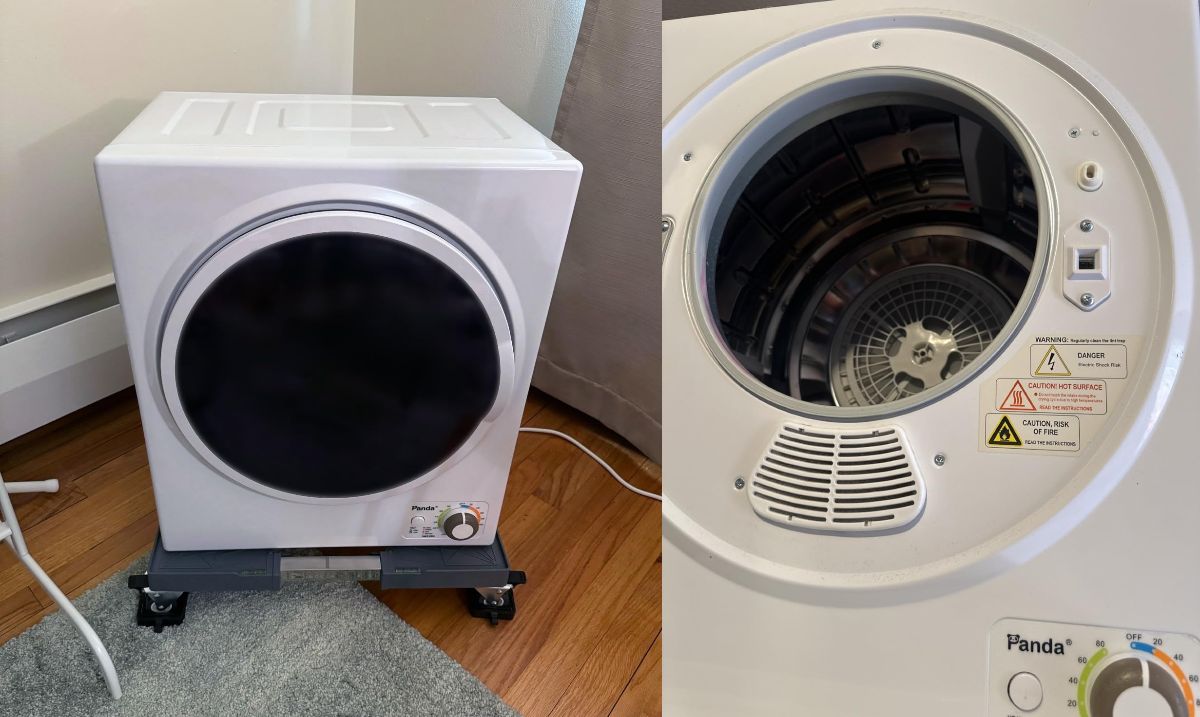
Helpful Review: I just started using this dryer and so far, I’m really pleased with it. I have a Midea 1.6 cu. ft. top-loading portable washer, and from what I’ve found, half loads from that machine are about the maximum that this dryer can handle effectively. I was able to easily connect an indoor vent using a 3-inch to 4-inch converter, and the setup process was quick and straightforward. I’ve noticed that the dryer runs hotter and more efficiently when the timer dial is set in the red zone between 120 and 200 minutes, compared to the cooler orange or yellow zones. To get a hot 1-hour cycle, I simply set the dial to 180 minutes and stop it at the 120-minute mark, which bypasses the built-in cool-down phase in the lower settings.
So far, each of the following loads took about an hour to dry: four medium to large men’s sweatshirts; a load of 12 washcloths, six pairs of cotton socks, four flannel boxers, and two T-shirts; and a separate load with one bath towel, one hand towel, and six more washcloths. A smaller load of three thermal tops and a T-shirt came out completely dry after an hour. As for sheets, which were one of the main reasons I bought this machine, a single queen-size sheet fits comfortably. I avoid filling the drum more than halfway to ensure efficient tumbling and drying. It is possible to cram more in, but the results aren’t as good. I also run two spin cycles on my washer to remove excess water before drying.
The dryer is currently sitting on top of my refrigerator and fits perfectly there. It’s located in a multi-purpose room that combines the kitchen, dining, living, and office areas. The dryer causes a slight increase in room warmth when running, especially if the oven is also on, but overall it doesn’t overheat the space. Humidity increased from 30 to 50 percent during use, which is actually a plus in the winter. In warmer months, I plan to switch to window venting. If you don’t mind doing smaller loads more often and you’re working with limited space, this dryer is a solid alternative to the laundromat.
After three weeks of use, I’m getting the hang of optimizing load size, time, and temperature settings. The biggest challenge so far has been drying pants, especially corduroy, which come out wrinkled even when dried alone. Drying a full set of queen-size sheets takes two to three hours since only one sheet fits at a time. Still, when I get the balance right, clothes come out beautifully. My goal is always to dry each load within an hour. I’ve found it easier to stay on top of laundry by doing smaller loads more frequently. For anyone who is limited on space or electrical access, this dryer is definitely worth considering. It’s especially ideal for a single person or a couple without children.
Two months in, I’ve really come to appreciate this dryer. I now have the right settings figured out to dry loads efficiently. I continue using two spin cycles on my washer, which helps reduce the drying time. Although I typically run several small loads a week, I recently got sick and laundry piled up. Still, I had no trouble catching up. By the time the first load finished drying, the next was ready to go in. This has completely eliminated my old routine of spending all day Sunday doing laundry. Even though pants still come out wrinkled, I use a wrinkle-release spray and they look fine. Sheets still require a few hours, but not having to trek out in freezing weather just to dry a load is more than worth it. I also haven’t seen any noticeable increase in my electric bill.
Some people have complained about the lint filter being hard to clean. I’ve always cleaned the lint filter after every load in any dryer I’ve owned, and this one is no different. Yes, it takes an extra step or two, but it’s manageable. I know that a clean filter helps improve drying efficiency, and that’s my priority. I’ve included some photos showing the front and side of the dryer (with the indoor vent kit attached), the lint filter, and a typical load that dried in an hour.
Around the 11-month mark, just before the warranty expired, the dryer began making a scraping noise. Eventually, I noticed a white piece of felt protruding from the drum. I contacted the company after the warranty had already expired, which was my oversight. They explained that the felt helps cushion the dryer drum. While the company was helpful and responsive, getting a replacement part wasn’t simple. I could either wait up to two months for a replacement felt strip at a cost of $18 or buy a whole new drum with the felt pre-attached for $60. Although the customer service was polite and responsive, the parts process makes me hesitant to purchase from the brand again.
Overall, this dryer has proven to be a smart purchase. It takes a little learning and patience to get the most out of it, especially with larger or wrinkle-prone items, but it’s been a reliable and energy-efficient solution for my laundry needs.
5. Magic Chef 2.6 Cu. Ft. Compact Electric Dryer
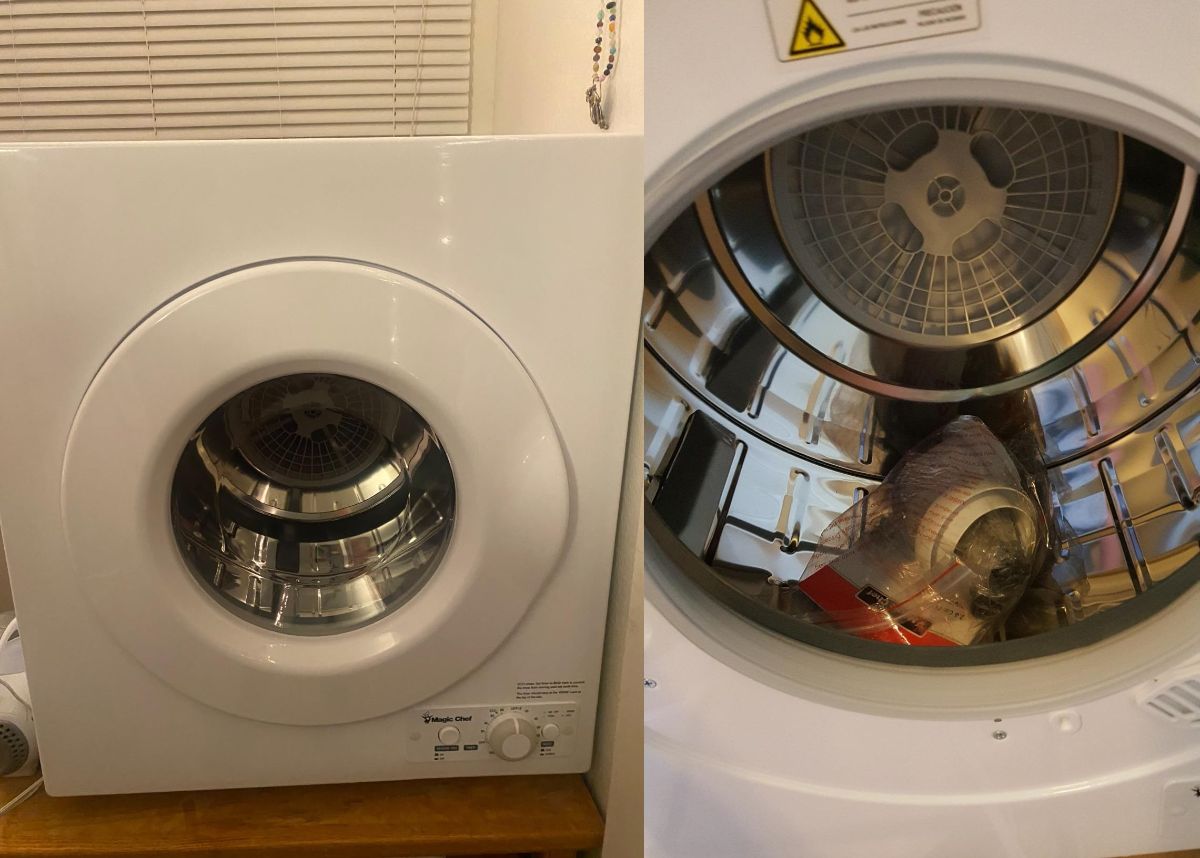
Helpful Review: I purchased this dryer back in June 2017, and as of July 2018, it’s still going strong without any issues. It even survived our move from the San Francisco Bay Area to Los Angeles with only a minor dent and continues to work just fine. I can’t say the same for some of our other belongings, which didn’t survive the move as well.
When we were living in a condo in San Francisco, we had no washer or dryer. I had to drag our dirty laundry to the local laundromat, and over time, it became exhausting. Doing laundry in the Bay Area was expensive, and finding parking made it even more stressful. On top of that, I had to leave our two small children at home with my husband, who would call and message me constantly, overwhelmed with the kids. After one particularly frustrating trip, I went online and ordered this dryer. I also bought a portable washing machine through another store since it was back-ordered on Amazon and I couldn’t wait a whole month.
With two little kids and a husband who works out regularly, I do about four loads of laundry every week. Back then, one load at the laundromat cost around $4 to $6 depending on the washer size and whether I needed extra drying time. That meant I was spending at least $16 a week. By now, this dryer has more than paid for itself and has saved me both time and sanity. If it ever stops working, I’ll gladly buy another because it’s easily worth it in less than a year.
When we moved to Los Angeles, my husband wanted to leave the washer and dryer behind, but I insisted on bringing them. I’m so glad I did. Our current building has a laundry room, but with only two washers and two dryers for the entire complex, doing laundry was nearly impossible. Some people leave their clothes in the machines for hours, and I would end up running up and down the stairs just to check if they were finally done. It drove me crazy.
I’ve seen a lot of complaints about this dryer, but I believe many of them come down to user error. Yes, there can be manufacturing defects or shipping damage, but people also tend to ignore maintenance. I’m certain a lot of negative reviewers failed to clean the lint filter regularly. When lint builds up, it causes the machine to overheat and stop working. At first, it was a little inconvenient bending over to clean the lint compartment since I keep the dryer on the floor, but I got used to it. Because I take care of it, this dryer has never given me any problems. If you don’t check and clean the filters, lint can accumulate behind them and eventually get into the motor. This isn’t a full-sized dryer and isn’t built like one, so the filters get dirty quickly and need frequent washing. I recommend buying extra generic filters here on Amazon. They cost around $5.50 for a set that includes four round exhaust filters and one small intake filter.
You also need to be gentle with the door, which has a plastic hinge. Don’t pull it down roughly or let kids play with it. There’s no start button—it begins running as soon as you turn the knob to your desired drying time. Never overstuff the drum, as that can also cause the motor to overheat. I use a Magic Chef 1.6 cu. ft. top-loading compact washer and always split the load in half for drying, even though the dryer has a 2.6 cu. ft. capacity. This ensures the clothes tumble properly and dry evenly.
For your first use, I recommend wiping down the inside to remove any residue from manufacturing. Make sure the exhaust and intake filters are in place. Run a cycle with a wet towel and a fragrant dryer sheet to eliminate any unpleasant odor and to confirm it heats properly.
Like any appliance, if you take care of it, it will last a long time. Honestly, I’d rather dry my family’s clothes in a clean personal machine than risk using a shared laundromat dryer where someone might have washed dirty rugs, muddy shoes, or worse. Especially with kids, hygiene is important to me, and this dryer has been a dependable, stress-saving solution for over a year.
Frequently Asked Questions:
What type of clothes dryer should I buy: electric or gas?
Most homes use electric dryers because they’re easier to install and don’t require a gas hookup. Gas dryers are more energy-efficient long-term but usually cost more upfront and need professional installation.
How much capacity do I need in a dryer?
For a household of 1–2 people, a compact dryer (under 4.0 cu. ft.) is usually sufficient. For families or heavier laundry needs, a standard or large dryer (7.0 cu. ft. or more) is better. Match the dryer size to your washer’s capacity for best results.
Do I need a vented or ventless dryer?
- Vented dryers expel hot air outside and are common in most homes.
- Ventless dryers (like condenser or heat pump models) recycle air and are ideal for apartments or spaces without exterior access. They cost more but offer easier installation and are more energy efficient.
How long does it take to dry clothes in a typical dryer?
Most standard dryers take 40 to 60 minutes to dry a regular load. Compact or portable dryers may take longer, especially on 110V outlets or with heavier fabrics.
Is a portable or compact dryer a good option?
Yes, if you’re limited on space or don’t do large loads. Portable dryers are ideal for apartments, RVs, or single-person households. They plug into standard outlets and often work well with portable washers.
Do clothes dryers require regular maintenance?
Yes. Always clean the lint filter after every load. Check and clean the vent hose regularly to prevent lint buildup, which can cause overheating or even fire hazards.
